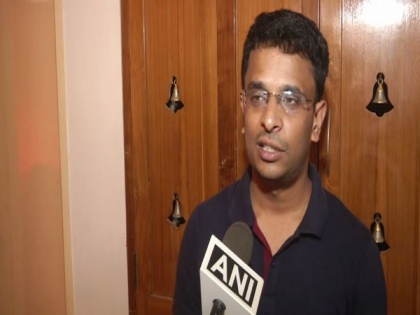Spotted something 'out of ordinary' in NASA's images: Chennai engineer who located Vikram debris on moon
By ANI | Published: December 3, 2019 02:28 PM2019-12-03T14:28:12+5:302019-12-03T14:45:23+5:30
Chennai-based amateur astronomer Shanmuga Subraman spotted something "out of the ordinary" in images released by NASA that led to locate debris on the surface of the moon of ISRO's Vikram lander of its Chandrayaan-2 mission.

Spotted something 'out of ordinary' in NASA's images: Chennai engineer who located Vikram debris on moon
Chennai-based amateur astronomer Shanmuga Subraman spotted something "out of the ordinary" in images released by NASA that led to locate debris on the surface of the moon of ISRO's Vikram lander of its Chandrayaan-2 mission.
Subramum tweeted on Tuesday morning about a mail he received from NASA thanking him for helping them locate the crash site.
NASA, on Tuesday, announced that its moon mission has discovered the remains of Vikram lander and identified the debris spotted by Subraman with an "S" on its image. The debris was found about 750 meters northwest of the main crash site.
Vikram was scheduled to make a soft-landing near the south pole of the moon on September 7. However, minutes before its scheduled soft-landing, the Indian Space Research Orgsation (ISRO) had lost communication with the lander at 2.1 kilometers above the moon's surface.
On September 17, NASA had announced that they could not spot the Vikram Lander of Chandrayaan 2 on the surface of the moon.
Subraman, an engineer by profession, says he spent over 8-10 hours each day painstakingly combing through images released by NASA before and after the impact to locate a needle in a haystack.
He downloaded the image released by NASA of Lunar Reconnaissance Orbiter (LRO) Camera, showing the site's changes on the Moon and the impact point before and after the spacecraft had made a hard-landing on the lunar surface. Subraman then compared the image with old and new images. When he spotted something "out of ordinary" that very moment he said he knew that he had spotted something big.
Stopped his research immediately, he tweeted to NASA about his finding on October 3.
He also sent an mail to the spacy agency on October 18 and received confirmation today by mail from NASA. Talking to , Subraman said that he is elated to receive the NASA's reply.
"NASA publicised images on their blog on September 17 and after looking at NASA's blog and NASA statement that they were not able to find [Vikram Lander] it because it is hidden in shadows. I downloaded 1.5 GB image on the system and I compared it side by side with old image and new image of LRO and I was able to find something that was out of ordinary in a particular spot then I thought this might be the debris because that was the something that was not seen in the spot," Subraman said.
"I tweeted out to them (NASA) on October 3rd and send a mail to them on October 18. I got their confirmation on December 3. I was elated to receive their confirmation. I was spending something 8-10 hours each day for four to five hours on that. I stopped my research after I sent the tweet because I knew that this might be the probable debris," he added.
In a statement, NASA said that Subraman contacted the LRO project with positive identification of debris. After receiving this tip, the LROC team confirmed the identification by comparing before and after images.
"The Lunar Reconnaissance Orbiter Camera team released the first mosaic (acquired on September 17) of the site on September 26 and many people have downloaded the mosaic to search for signs of Vikram. When the images for the first mosaic were acquired the impact point was poorly illuminated and thus not easily identifiable. Two subsequent image sequences were acquired on October 14 and 15, and on November 11. The LROC team scoured the surrounding area in these new mosaics and found the impact site and associated debris field," it said.
( With inputs from ANI )
Open in app